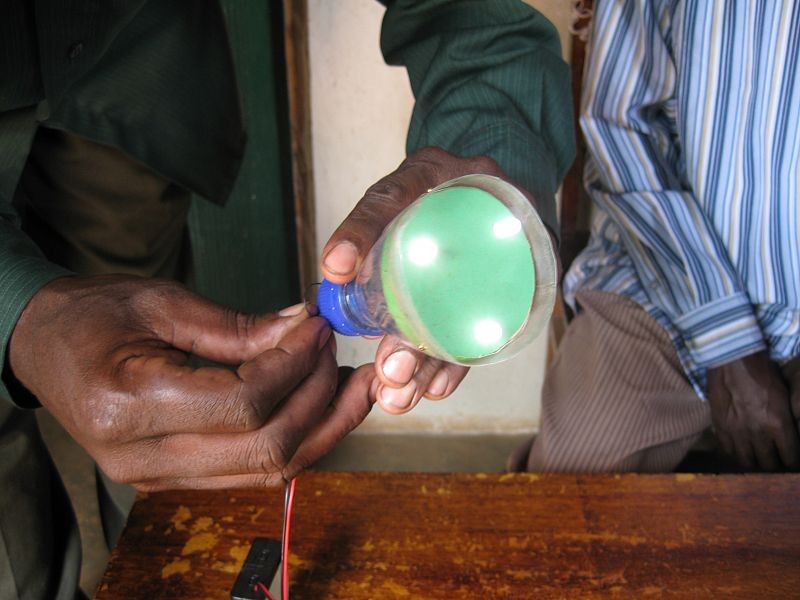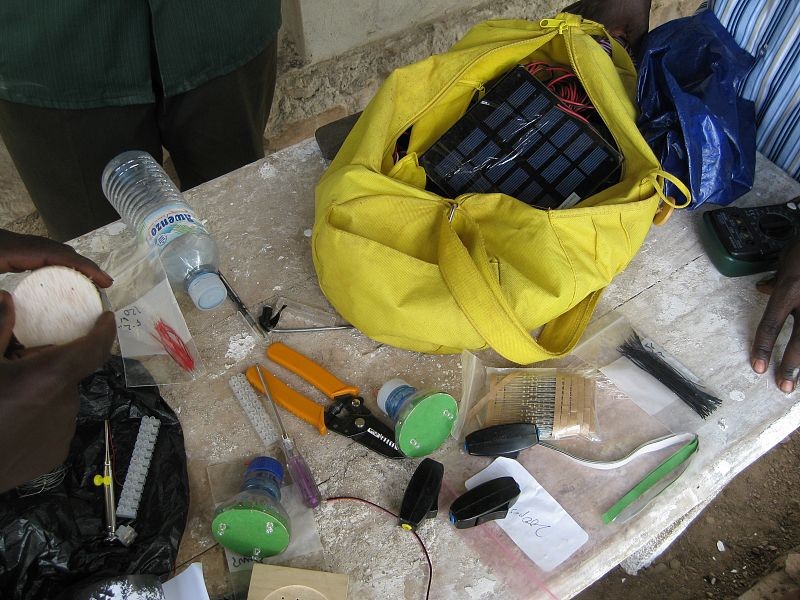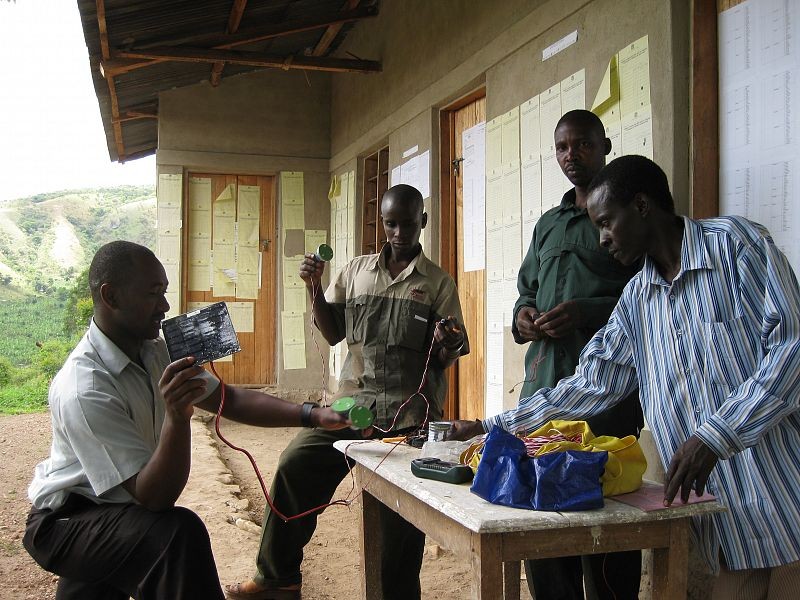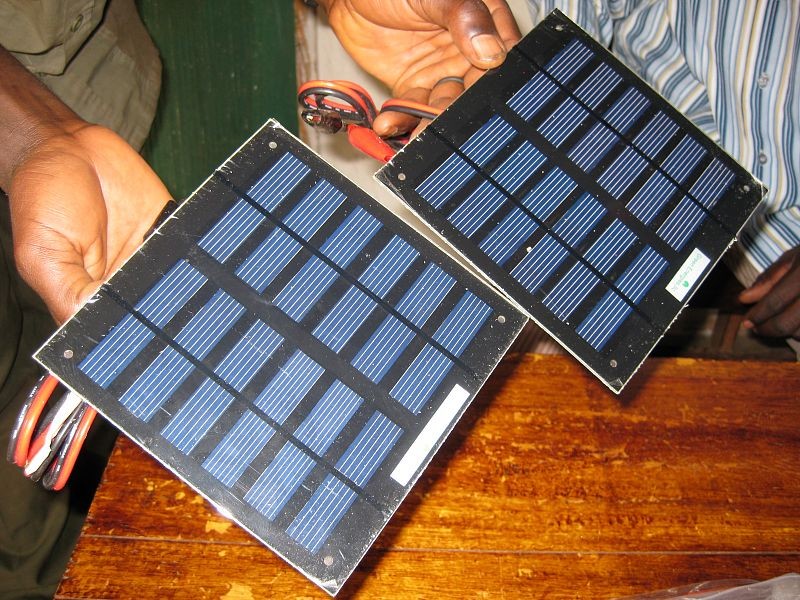To improve access to low cost lighting by working with rural-based entrepreneurs
Over 500 million people in Sub Saharan Africa have no access to adequate lighting. Typical rural households use mainly kerosene to meet their lighting needs. In order to improve the current situation, the application of LED lighting technology, powered by solar energy, is a promising option. It can provide clean, low cost and better quality lighting to rural populations in developing countries. The main challenge, however, is to make these products accessible to the energy poor.

The project, implemented by CAMCO in the Kagera Region, NW Tanzania, sought to improve access to low cost LED lighting systems by establishing local micro- factories at village level. Local capacity is used for the assembly, installation and marketing of LED lighting systems that are suitable for rural households with no access to grid electricity.
Green Energies LLC, a US based solar company that manufactures products for the developing world, was the project partner for the technology and training aspects. The local partner involved in terms of community liaison was SCC-Vi Agro-forestry, which is running a long-term programme in the region to improve the livelihood of farmers. The project team identified existing local groups (micro-finance groups) as suitable local entrepreneurs.
The first stage, which took place in July 2009, was to train a pilot group. After monitoring and evaluating the initial results, another six micro-factories were set up at the end of 2009. These are located throughout the project area (Karagwe district). Furthermore, a revolving fund was established to facilitate the bulk import of components via a regional centre. From this centre the raw materials and imported components are distributed to the micro-factories in the villages.
Technology, Operations and Maintenance
During the training sessions, the entrepreneurs learned how to assemble, install and maintain the lighting systems and were also trained in marketing techniques. Two products are manufactured in the micro-factories: the Taa Bora flashlight/ reading light kit and the A3 lighting system kit for mounted room lighting.

Both combine the use of local low-cost materials, such as empty water bottles (for the lampshade and battery case) and imported components (manufacturing toolkits). The latter consist of LED modules, small solar panels (1.25 W) and a battery package (2 AA batteries). The solar panel for the A3 lighting system is installed on the rooftop of the house, so that the batteries are charged during daylight hours. The A3 also provides an attachment enabling the user to play a small transistor radio and, recently, a separate option was developed consisting of a small adapter for charging mobile phones.
The components were designed to be light, simple and safe to use. For the assembly and installation of the final products only simple tools are used. By changing/manipulating the number of components applied, the product can be adapted to various needs and uses within a village home. The lights are produced locally and maintained directly by the local entrepreneurs.
Financial Issues and Management
In order to set up the micro-factories 7 manufacturing toolkits were purchased. In total, 17 kit system packages were bought from Green Energies LLC, each package comprising 25 kit systems (totaling 425 systems). The packages were loaned to the micro-factories with payment only being made once all 25 systems had been assembled, installed and sold. The repayments were collected by local project staff and transferred to Green Energies who then supplied the next packages.

The purchase price for one lighting kit is about 25-30 US$, while the retail price is as high as 40-65 US$. The prices are kept low by the regional distribution centre, which works on a non-profit basis. As the annual expenditure on kerosene for lighting by the average household in the project area is about 50-90 US$/year the installed LED lighting systems represented significant cost savings for the local population.
Environmental Issues
During the project phase, 270 lighting systems were installed (as of July 2010). Estimating that each of these systems replaces 5 liters of kerosene per month for lighting, 16,200 liters/year of kerosene have been replaced. This equates to emission savings of 36,300kg CO2/year. Expected sales of 500 lighting systems per month would result in even higher emission savings in the future.
Furthermore, the use of empty water bottles as a component of the LED lighting systems encourages conservation, whilst also saving money and adding value to the manufactured products. The lifetime of the battery pack is about 2- 3 years. Battery disposal needs to be organized by the micro-factories, which is assured if the users buy their new package at the micro-factory.
Social Issues

The project has a capacity-building element as local entrepreneurs were trained and employment opportunities were created within the local communities. Moreover, the lighting systems are designed to be affordable in order to meet the needs of the project's target group - low-income households. Due to the fact that "neighbors“ (i.e. local entrepreneurs) install the lights, there is no difficulty in terms of contacting the installer should any problems arise. The introduction of the LED lighting systems also helped to reduce indoor air pollution caused by the use of kerosene.
Results & Impact
During the project, 7 micro-factories were established, which have sold 270 LED lighting systems to rural farmers to date. The micro-factories have already taken action on their own initiative to respond to their customers' needs. The families who purchased the LED systems benefit from access to clean lighting and lower costs.
Replicability
Within the region the project could undoubtedly be replicated. The established regional centre has the capacity to work with more local entrepreneurs outside the initial target area to set up new micro-factories in other communities. In principle, the project structure could also be replicated in other regions.
The micro-factories are easy and inexpensive to set up and the products sold are simple and light, which significantly minimises transportation logistics compared to larger solar PV systems. However, the project has benefited greatly from an ongoing project carried out by SCC-Vi Agro-forestry. Therefore, in order to replicate this project in other regions, more preparatory work would have to be done to engage with the local communities and to establish an appropriate financing mechanism.
Lessons learned
Within the region, the project could undoubtedly be replicated. The established regional centre has the capacity to work with more local entrepreneurs outside the initial target area to set up new micro-factories in other communities. In principle, the project structure could also be replicated in other regions.
The micro-factories are easy and inexpensive to set up and the products sold are simple and light, which significantly minimises transportation logistics compared to larger solar PV systems. However, the project has benefited greatly from an ongoing project carried out by SCC-Vi Agro-forestry. Therefore, in order to replicate this project in other regions, more preparatory work would have to be done to engage with the local communities and to establish an appropriate financing mechanism.

Another problem that occurred was the poor quality of locally available switches. After only a few weeks of installation the switching mechanism became loose and caused the lights to flicker and dim. To combat this, one micro-factory identified an alternative; they started using standard AC switches which are locally available, inexpensive and of better quality.
During the implementation stage of the project it was also discovered that business for the micro-factories peaked during the two harvest seasons and slowed down for the rest of the year. This was due to the additional available income during harvest season, meaning that farmers were more likely to buy a lighting system at that time. One micro-factory successfully targeted this fluctuation in sales by offering purchases on short-term credit.
-> Download the detailed summary here!
Projects with same technology
A model for affordable solar power for rural homes in remote islands of Bangladesh
Promoting sustainable livelihoods at Lake Victoria by introducing solar lamps for night fishing
To replace kerosene lights for night fishing by introducing energy hubs to power sustainable lighting systems
Projects in same country
Renewable Energy For Drip Irrigation Of Horticultural Crops
To apply renewable energy technology for irrigation purposes replacing fuel based water pumps, saving water, fuel and CO2 emissions